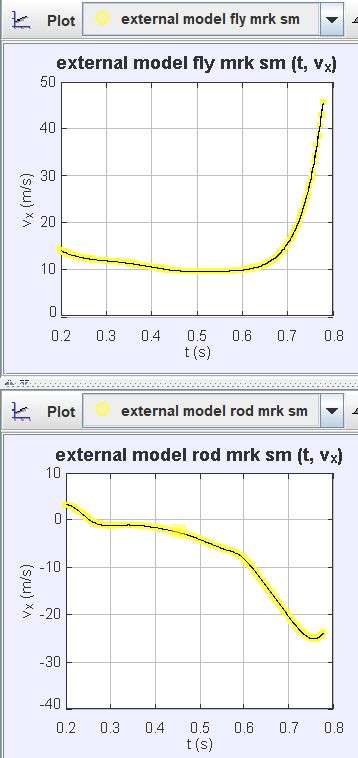gordonjudd wrote: ↑Sat Aug 29, 2020 10:44 pm
By change in velocity I assume you are talking about acceleration and not the derivative of the acceleration which is jerk.
Hi Gordy
I used "change in velocity" based on your "the timing for how the velocity of the fly leg is affected by a change in the rod leg velocity". However, the two legs' velocities in this case change virtually all the time, so it is somewhat pointless to merely talk "change in velocity" without going to slope changes, trends, patterns, increases and decreases in acceleration (which is jerk).
gordonjudd wrote: ↑Sat Aug 29, 2020 10:44 pm
Can you point to some of the time points in those two curves to explain where you see that changes in the rod leg's acceleration is accompanied by a simultaneous change in the fly leg's acceleration?
If you don't mind, I'd rather use your data from the file you sent me some days ago, as the huge fly leg velocity toward the end of your external model curve effectively dwarfs out the readability of earlier events. This data is smoothed somewhat differently to your later version, but I can zoom in a bit and therefore work with it.
Here is your data, with the pink areas marking where negative direction rod leg jerk and positive direction fly leg jerk occurred:
The dot and time instance is where you jumped from one fly leg marker to another on the same run. Hence the squiggle.
The lighter coloured area is a longish gradual jerk according to your smoothed data.
The relationships should be obvious.
To the casual reader: On a velocity chart, slope indicates acceleration, curves indicate a change in acceleration (jerk). The concavity of such a curve indicates the direction of the jerk. On an acceleration chart, slope indicates jerk.
Here is the same exercise on my measured data of the same cast:
All the best,
Dirk


